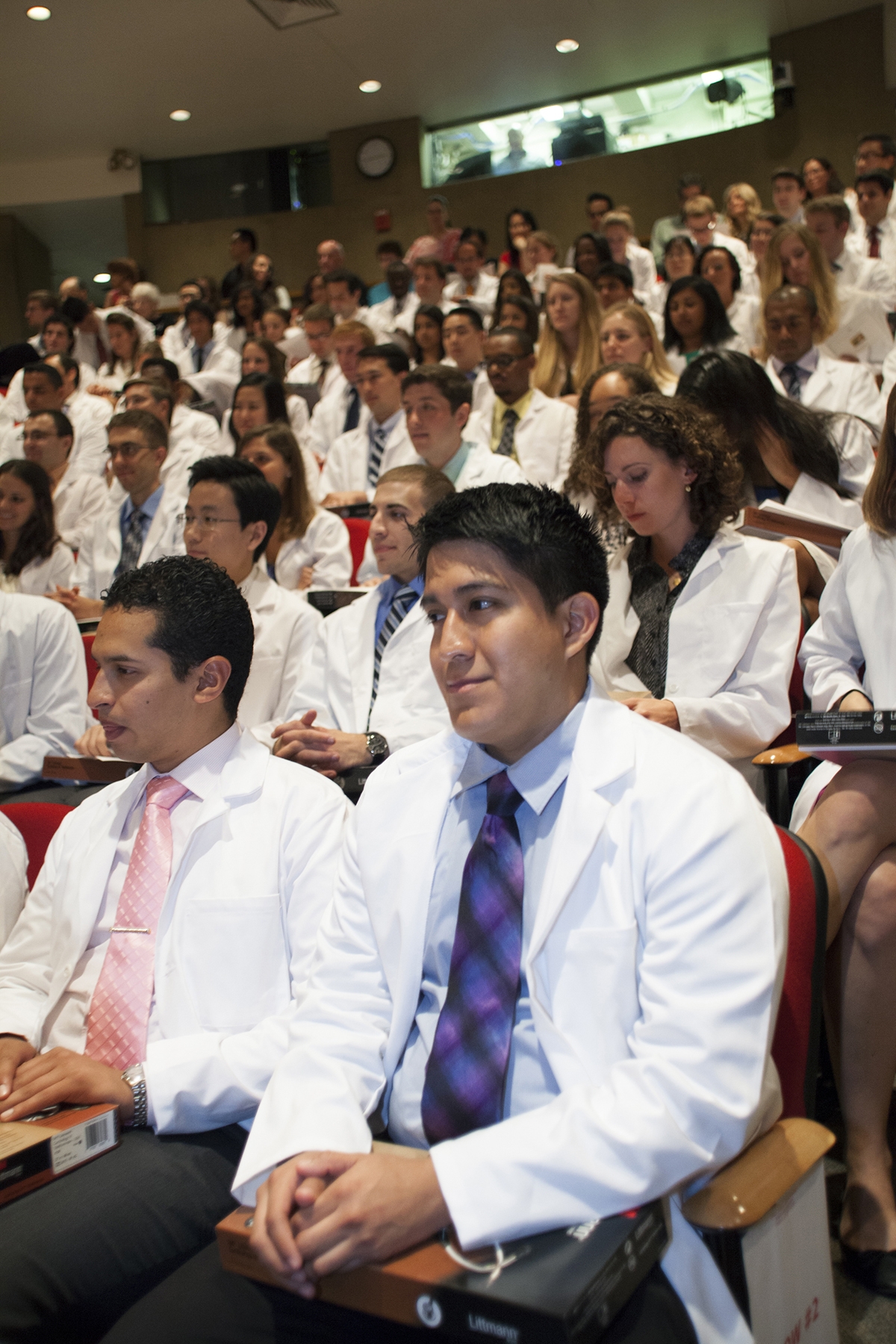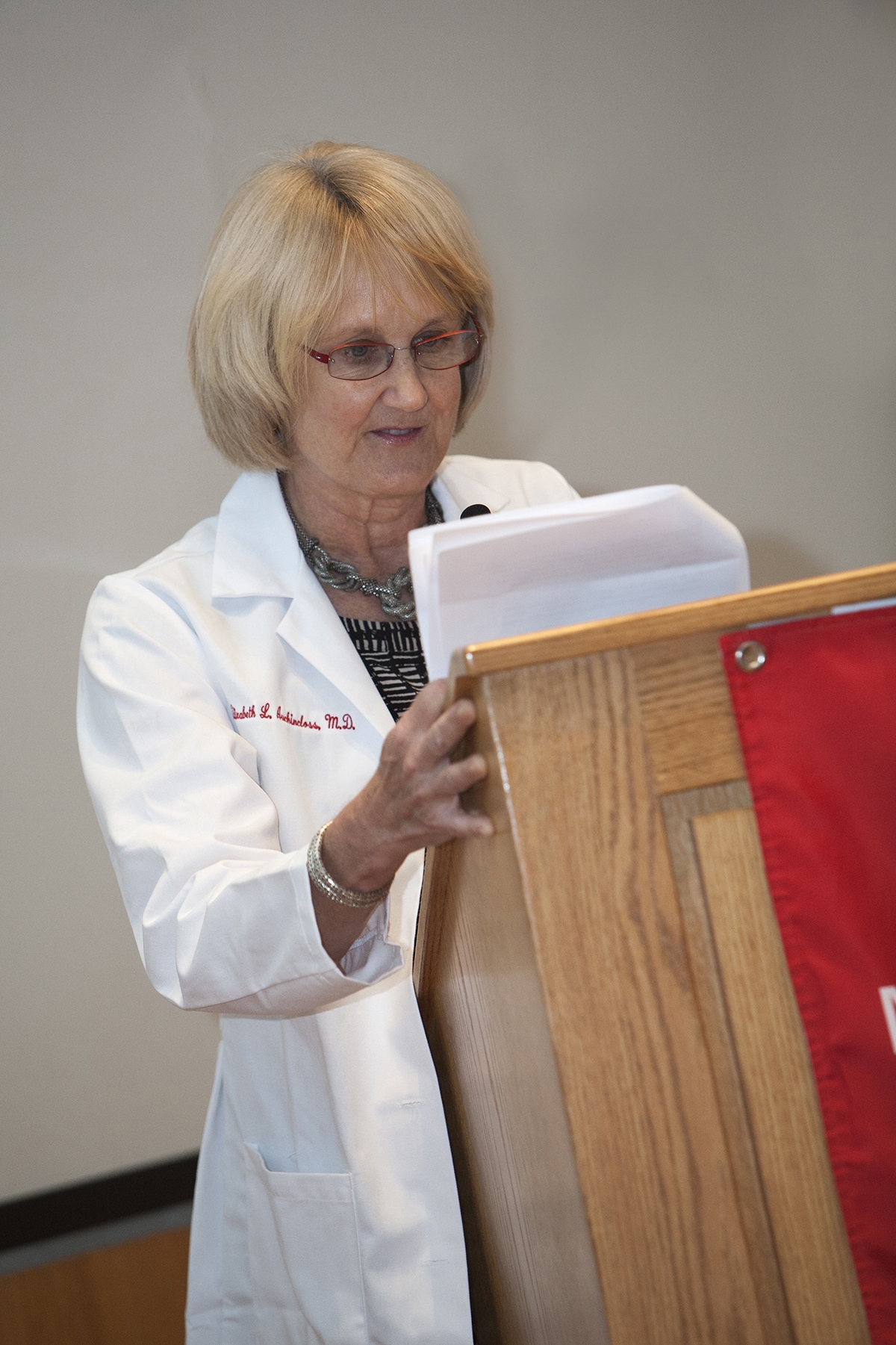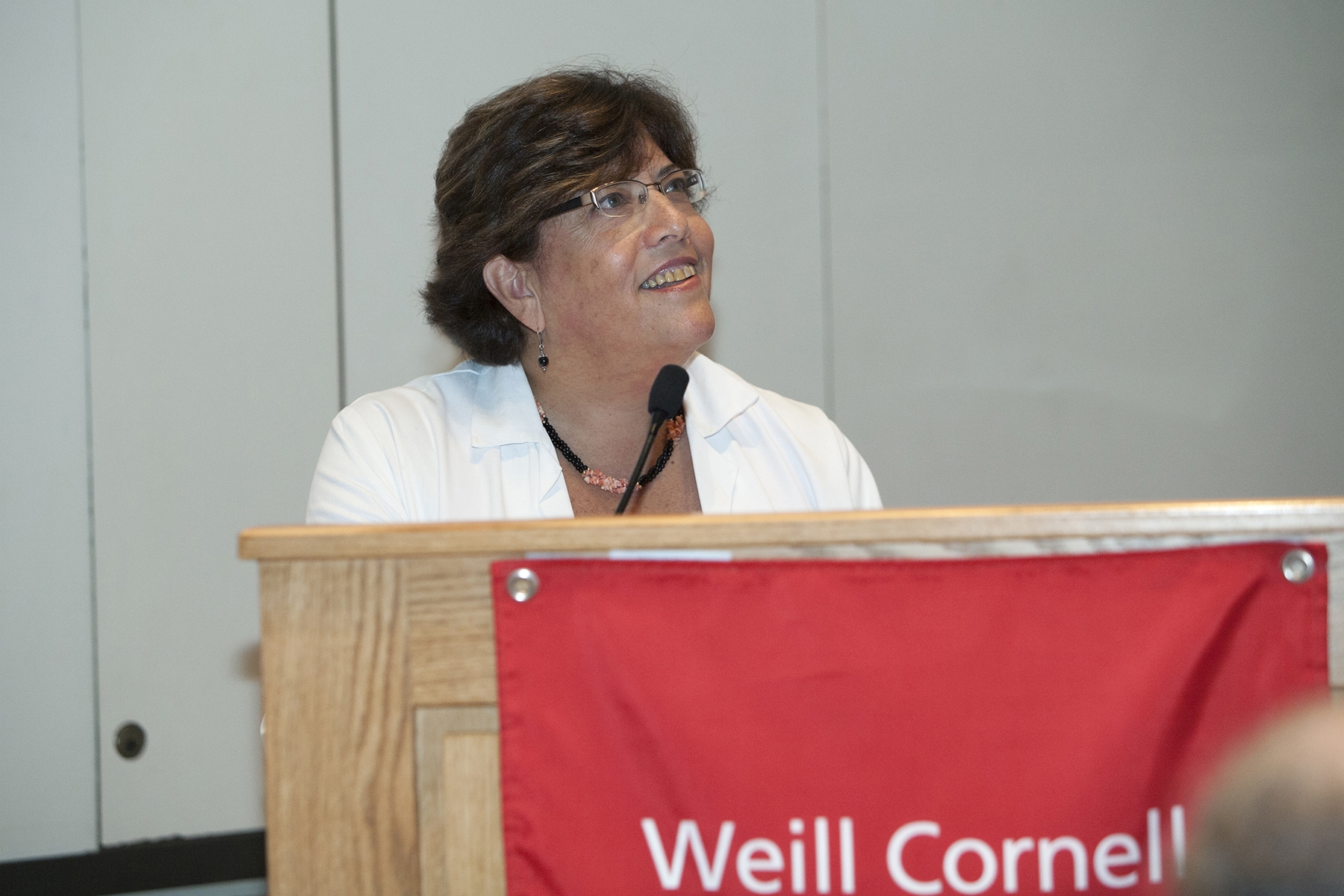
First-year M.D.-Ph.D. students Daniel Cabrera, left, and Steven Cajamarca, right, don their short white coats for the first time.
A white coat. To many, it may just be a ceremonial uniform used to distinguish a doctor from a patient in a hospital — or protective gear against accidental spills in the lab. But to the Weill Cornell Medical College Class of 2017, it's more than an article of clothing.
Weill Cornell's 17th annual White Coat Ceremony on Tuesday marked a new chapter for each of the 103 students who comprise this year's incoming class. It served as a celebration of years of diligence, aspiration and preparation that led them down the steps of Uris Auditorium, where Weill Cornell faculty helped students don their short white coats as proud family and friends looked on.
"I know how much this day means to you, your fellow students, and to your family and friends who are here with you," said Dr. Laurie H. Glimcher, the Stephen and Suzanne Weiss Dean of Weill Cornell Medical College. "I congratulate you on being here today."
For these students, the white coat is as much a symbol of what it took to get to medical school as it is of what's to come. It serves as the first tangible link to the medical careers they aspire to achieve, and comes with responsibility and a devotion to service and humility.
"I now have the white coat, but I have to earn the right to wear it," said first-year student Jonathan Bar, 22, of New Jersey. "It's powerful and humbling at the same time."

Dr. Elizabeth Auchincloss gives the keynote address during the White Coat Ceremony
Bar knew when he was just 16 years old that he wanted to become a doctor. An avid martial artist, Bar needed to learn CPR and first aid to continue participating in the sport, and also needed to fulfill high school community service requirements. The local ambulance corps seemed like the perfect fit. He realized it was the moment he began thinking of himself as a health care provider.
"It was the single best thing I've ever done," he said.
It took Mesha Shaw, 27, of Michigan, a little while longer to discover her medical aspirations. She joined Teach for America after graduating from Spellman College in Atlanta, teaching life sciences to high school students in the city's public schools. Teaching felt important and inspiring, she said, but it was not what she was called to do.
She went back to school, earning a graduate degree in physiology from Loyola University Chicago. That experience, combined with seeing illness in her family, guided her to medical school.
"I think the white coat is a symbol of the things I aspire to achieve and the start of something important," she said. "I can change people's lives."
Each of the new students is one step closer to achieving his or her dream of feeling the special sense of accomplishment that comes from affecting patients' lives.
"We often have to put our own immediate feelings and opinions aside as we assume our professional role as caregivers of patients," said Dr. Joseph Murray, associate dean for student affairs and equal opportunity programs and associate professor of clinical psychiatry. "We use our talents and knowledge in the service of our patients and we do so with a code of professional beliefs shared by all of our physician colleagues. We actually take pride in our humility, that we strive to serve our patients, so that they are the center of what we do."

Dr. Veronica LoFaso speaks to first-year medical students during the white coat ceremony.
Dr. Glimcher recited the Hippocratic Oath to the students during the ceremony to reinforce this professional standard — which they must uphold from now on. Students also got a glimpse of their professional futures from Dr. Veronica LoFaso, the Roland Balay Clinical Scholar and associate professor of clinical medicine, and keynote speaker Dr. Elizabeth Auchincloss, vice chair of graduate medical education in the Department of Psychiatry, the DeWitt Wallace Senior Scholar and professor of clinical psychiatry.
"The white coat means that you are no longer purely in the world of academia — although your learning will surely be life long — but you are now a clinician as well," Dr. LoFaso said. "Heretofore, most of your energies have gone into your education and your self-growth, that which has made you the stars that you are today and allowed you to compete academically and rise to your current status. But now, as you begin clinical medicine, your focus is going to be looking outside of yourself to help others. You will have great satisfaction in curing many patients. It's a feeling like no other.
"The coats are all white," she continued, "but you will show your individual colors, your special talents and gifts. You will soon see the impact you will have on your patients' lives."

